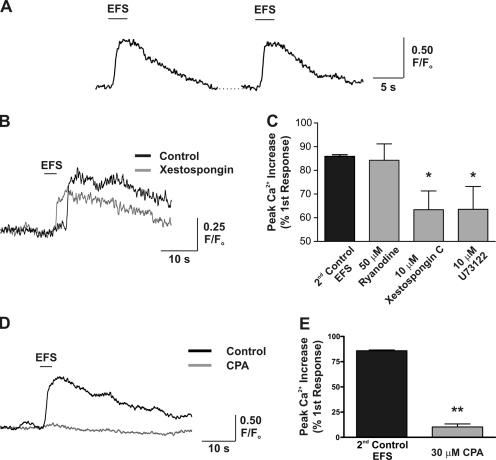Figure 2.
Neuronally evoked increases in endfoot [Ca2+]i involve Ca2+ release from an intracellular Ca2+ store, likely through activation of InsP3R. (A) EFS was used to induce neuronal activity, allowing for the generation of multiple consistent increases in endfoot [Ca2+]i. (B) Representative traces illustrating that EFS-induced increases in endfoot [Ca2+]i were significantly decreased after a 20-min incubation with 10 μM of the InsP3R antagonist xestospongin C. (C) Mean data showing the effect of RYR, InsP3R, and phospholipase C inhibition on the generation of EFS-induced [Ca2+]i increases. Drug-treated responses are compared with the mean time-matched control response. (D) Representative traces illustrating that EFS-induced increases in endfoot [Ca2+]i were significantly decreased after a 20-min incubation with 30 μM of the SERCA pump inhibitor CPA to deplete the internal Ca2+ store. (E) Mean data showing the peak [Ca2+]i increase elicited under control conditions and after incubation with CPA. Responses generated in the presence of CPA are compared with the mean time-matched control response. Error bars indicate mean ± SEM. *, P < 0.05; **, P < 0.0001.

